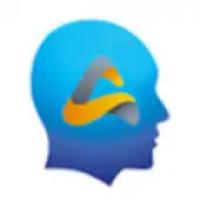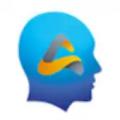5+ Years Experience Researcher & Writer in machine learning and AI for collecting and providing the ... View More
About Me
Machine learning (ML) has brought a revolution in artificial intelligence (AI) by simplifying a range of tasks such as text-based question answering, image generation, image segmentation, etc. In the healthcare sector, the true potential of machine learning is being realized in biomedical via applications in medical imaging and decision support systems. With the shift from conventional diagnostic techniques to deep learning models, ML is transforming healthcare, helping deliver more accurate diagnoses and personalized treatments. Who is the key driver of this transformation? It's nothing but multimodal data that contains information in varied formats like time series, imaging, audio, and text.
Each of these formats contributes to refining AI-driven diagnostics and treatment. First, let's take an example of time series data that is beneficial for real-time monitoring in ECG and EEG. Imaging, comprising MRI and CT scans, is helpful for accurate detection of disease. Audio analysis, such as heart and lung sounds, works for respiratory and cardiac assessment. Text data, which includes EHRs and clinical notes, improves predictive analytics and decision-making. All of these modalities are driving advances in precision medicine and personalized healthcare.
A shift from unimodal to multimodal
Unimodal was based on text-only or image-only and the shift from unimodal to multimodal learning constitutes a major change in the healthcare sector. An unimodal system was confined to a single kind of data-whether text, images, or numerical data-as opposed to multimodal models, which integrate multiple types of data, including medical imaging, EHRs, genomics, and sensor data from wearables. In this regard, AI has the ability to learn complex medical conditions and refine diagnosis precision, treatment planning, and predictive analytics. By applying multiple modalities, healthcare AI systems can lead to more holistic insights, individualized patient care, early disease detection, and improved clinical decision-making. This shift optimizes medical workflows as well as paves the way for groundbreaking advancements in real-time patient monitoring and precision medicine.
So how does it work?
It performs by integrating different modalities like time-series, image, or text through which AI models can attain better accuracy, addressing inherent challenges like aligning disparate data types. This is how human sensory processing works: The brain synthesizes inputs from different senses to give coherent perceptions. Large, well-curated datasets have been considered important for this kind of integration, and with the advancements seen in AI systems such as OpenAI's GPT-4, which relies on varied datasets to attain robust performance, the same will be the case in biomedicine with aggregating multimodal data empowering AI's capabilities for improved clinical decision-making.
Below, we illustrate the stages at which a multimodal system works:
Data Acquisition
It is a system, which works via collating data from numerous sources: EHRs, medical imaging devices (MRI, CT scans), wearable devices (fitness trackers, smartwatches), and patient-reported outcomes such as symptom questionnaires. For instance, AI-run wearable devices like Apple Watch and Fitbit can collect their heart rates, blood oxygen levels, ECG data, and more, integrating them into a patient's health profile.
Data Integration
At this stage, clinical data, vital signs, imaging results, and patient-reported information are compiled into a unified patient profile. The system assimilates all data streams into a centralized platform. Well-renowned platforms use AI to assess X-rays, CT scans, and ultrasounds, amalgamating imaging with patient history to detect early signs of osteoporosis and cardiovascular disease.
Data Pre-Processing
Pre-processing determines data consistency, compatibility, and quality. This involves standardizing data formats, removing noise or errors, and normalizing values to prepare the data for analysis.
Data Analysis
AI techniques and advanced algorithms evaluate the integrated data. Machine learning (ML) algorithms identify abnormalities in medical images, natural language processing (NLP) extracts essential details from clinical notes, and predictive models trace disease progression risks.
Clinical Decision Support
The system thus provides actionable insights and recommendations that facilitate clinical decision-making. These incorporate possible diagnoses, treatments, and personalized care plans drawn from the analyzed data.
Communication and Cooperation
The system fosters effective communication and collaboration among healthcare professionals. It enables doctors to share insights, treatment plans, and care coordination and interdisciplinary teamwork.
Patient monitoring and follow-up
This will ensure that healthcare providers can monitor patients' progress remotely. The wearable devices and the home-based sensors acquire the data of activity level, vital signs, and adherence to medication for facilitation in making timely interventions and remote consultations.
Engagement and Education of Patients
The system engages the patient by offering interactive tools, personal health information, and educational materials. Patients can view their health data, monitor progress, get reminders for medication or appointments, and follow specific condition guidance.
Research and Community Health
Aggregated and anonymized data within the system assist in population health studies and medical research. Analyzing large datasets by researchers can easily identify disease patterns, treatment efficiency, and supporting evidence-based practice.
Opportunities in Multimodal Machine Learning for Biomedicine
The integration of multimodal machine learning in clinical settings renders numerous advantages:
1. Improved Diagnostic Accuracy
Integration of varied data sources renders a holistic view of the patient, which leads to more accurate diagnoses. For example, integration of imaging data with electronic health records has been found to refine diagnostic accuracy by as much as 15%.
2. Individualized Treatment Plan
Multimodal data builds the opportunity to have treatment options customized for better patient profiles in treatment. With individualized treatment plans, adverse drug reactions can be minimized to 30%.
3. Enhanced Decision Support System
AI technology helps healthcare professionals in this regard as a data-driven solution that helps minimize diagnostic error. According to some reports, the use of such systems had reduced diagnostic error by 20% in different clinical settings.
Multimodal Learning Challenges in Medical Image-based Clinical Decision Support
Multimodal machine learning also comes with its share of challenges. Let’s understand the multimodal learning in clinical settings with the help of a framework shared by Baltrusaitis et al. (2019)
1. Representation
Representation is referred to as the base of multimodal machine learning as it includes converting complex data types like textual reports or medical images, into formats that could further be processed by AI systems. Traditional feature extraction methods, like SIFT or wavelet transforms, have given way to more advanced techniques. These include pretrained networks and autoencoders, which preserve relationships between different modalities. For instance, when representing both medical text and CT images, the spatial relationship between terms like skull and brain should remain consistent across modalities.
2. Multimodal Fusion
Fusion combines information from various modalities to create a useful predictive model. In medical imaging, for example, the fusion of CT and MRI data can better illustrate the pathology of the patient. Techniques like attention mechanisms facilitate learning more relevant features in each modality, hence refining model performance.
3. Multimodal Alignment
Alignment ensures that different modalities are in sync. For instance, when ECG (Electrocardiogram) and PPG (Photoplethysmogram) signals are to be aligned, timing needs to be precise to avoid misinterpretation. In the case of imaging, aligning video data with static images could improve the diagnosis. Techniques used for alignment are CCA (Canonical Correlation Analysis), cross-modal transformers, etc.
4. Multimodal Translation
Translation maps one modality to another, for example, to generate text-to-image or synthetic images. Translation is applied in biomedicine to generate synthetic CT scans from MRI data, addressing limitations of modality. This has been showcased to improve the accuracy of diagnostics and data augmentation of machine learning models.
5. Multimodal Co-learning
Co-learning utilizes information from one modality to complement another. Within medical imaging, co-learning has been applied to segmentation networks taking in both CT and MRI data streams. Challenges faced include normalizing pixel measurements between modalities, as well as variations in the detail levels within the images.
It demands high-quality labeled datasets, advanced AI techniques, and quality annotation strategies that bring high strength towards accuracy and reliability in medical image-based decision support systems. Data annotation companies are responsible for refining multimodal learning through the provision of precise labeling, alignments, and quality controls on all the datasets concerning medicine.
Annotated to data modalities such as medical imaging, EHRs, wearable devices, and patient-reported outcomes, the company provides data pre-processing and standardization, providing firms with a robust foundation for reliable AI models. Such companies present high-quality annotations for medical applications, allowing tasks such as disease risk assessment, anomaly detection, and patient monitoring.
Future Prospects
The future is quite bright, with some specific areas promising major break-throughs for multimodal machine learning in the field of biomedicine.
Advanced Representation Techniques
Advanced methods of representation will allow AI models to capture better contextual and abstract information across numerous modalities. Emerging approaches include self-supervised learning and graph-based embeddings that seek to level up the encoding and interpretation of textual, visual, and physiological data for better analysis.
Improved Models for Fusion
Enhancement in multimodal fusion techniques would ensure that different datasets can be integrated effectively and seamlessly; examples include medical imaging, genomic data, EHRs, and wearable sensor data. Enhanced fusion strategies that use attention mechanisms and deep architectures would further advance how AI models can extract the critical features and focus on prioritizing them across varied modalities, boosting overall insights and accuracy in predictive capability.
Real-Time Applications
The emergence of high-speed computing and edge AI will make it possible to assess multimodal data in real time, thereby speeding up clinical decision-making and improving patient outcomes. AI-driven systems will be able to process complex patient information in real time, supporting early disease detection, individualized treatment plans, and dynamic monitoring of health conditions. The ability to evaluate multiple streams of real-time data—such as ECG readings, MRI scans, and genetic markers—will greatly boost precision medicine and emergency response strategies.
Conclusion
Multimodal machine learning is reshaping biomedicine by integrating numerous data sources, including electronic health records, medical imaging, and wearable sensors to refine diagnosis, treatment, and clinical decision-making. This shift has built AI-powered healthcare systems to offer holistic insights, empowering early disease detection, precision medicine, and patient monitoring. Amid advancements in AI with multimodal machine learning, there appear a share of challenges like ethical considerations, data privacy and transparency that could be tackled with the help of data annotation companies. With the right solutions, it becomes simple to comply with ethical consideration and prioritize data privacy and transparency. Further, it sets up collaboration among medical professionals, AI researchers, and regulators and pushes effective and safe deployment of multimodal AI, ultimately supporting patient care.
With continuous and rapid progress, multimodal learning is leading at a greater place, especially widening its clinical influences. However, since AI is playing a crucial role in the healthcare domain, responsible innovation is again the need of the hour. The future of multimodal machine learning is vast but requires a huge commitment to considerations in terms of ethics, such as ensuring data privacy, accountability, and transparency between AI and human professionals.
Be the first person to like this.

